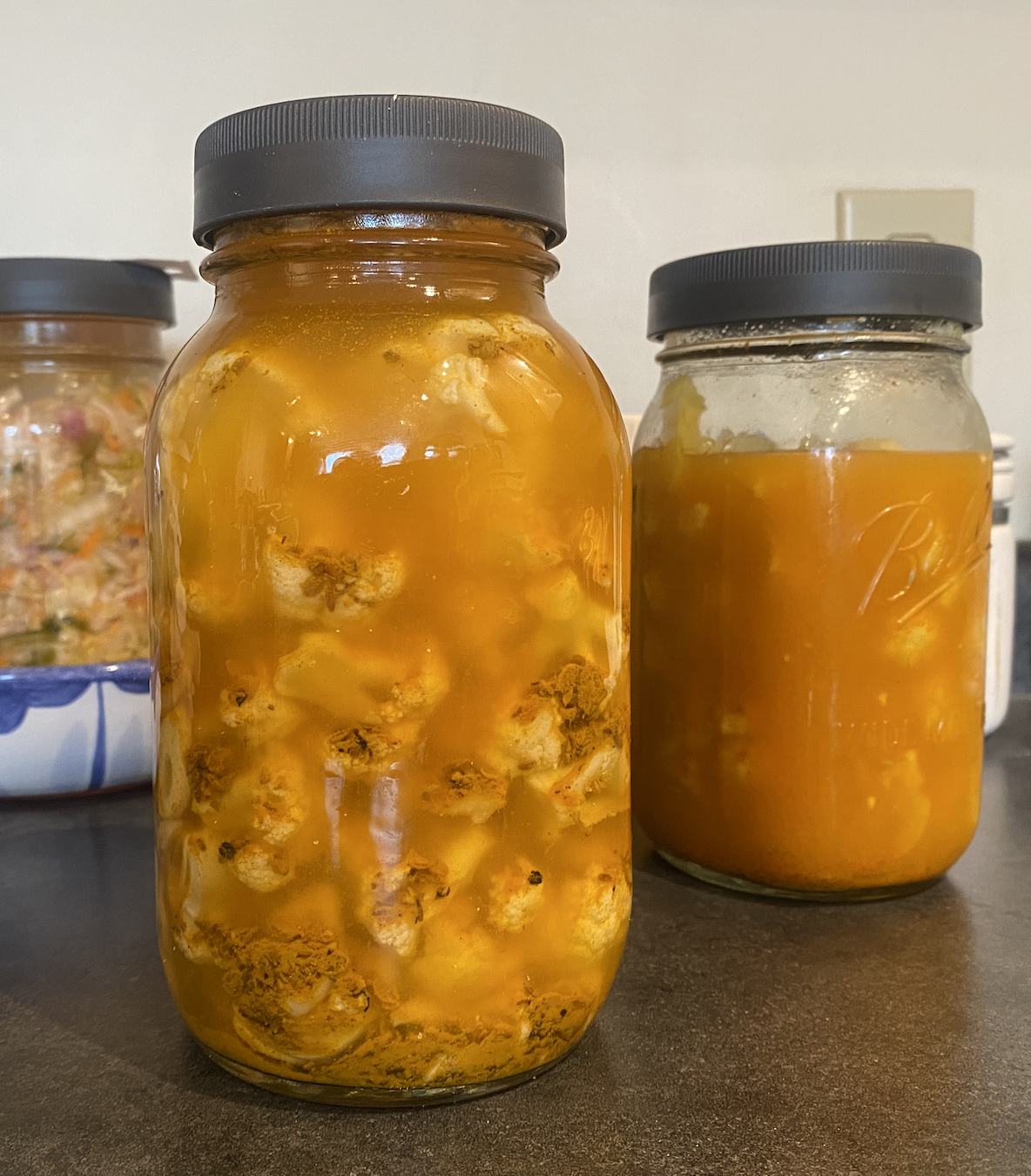You can make these delicious and vibrantly yellow florets with a favorite store-bought curry powder, or create your own fresh mixture of curry spices. I have tried both techniques, and both resulting ferments are delicious. However, the depth lent by freshly toasted and ground spices is perceptible, and worth the time, IMO.
Ingredients:
1/2 head of organic cauliflower (this will fit into 1 quart mason jar)
1 generous tablespoon of your favorite curry powder, or make your own blend! Here’s what I use:
spices: 1 t teaspoon each of toasted cumin, coriander, fenugreek, 1 teaspoon of black peppercorns, 2 teaspoons of turmeric (plus anything else you might want). Put everything into a mortar and pestle and grind to a medium coarseness.
1 inch of fresh ginger root sliced into coins, 2 garlic cloves, sliced
2% brine (2 teaspoons in 2 C water)
1/4 cup of juice from any previous ferment (vegetables, sauerkraut, fermented pickles) - this is charmingly called “backslop”. This step is optional, but kicks the ferment into gear a little faster by adding a dose of microbes and acid.
Equipment:
glass mason jar and lid
mortar and pestle
cutting board and knife
skillet to toast spices
Technique:
pull the cauliflower into small-medium-sized florets
toast and grind your spices, or open your favorite jar of curry powder or paste
slice ginger and garlic
Put everything in the jar. You can be methodical, putting the spices in the bottom, then layering cauliflower followed by ginger and garlic, repeating up the jar, finishing with the cauliflower. Or just tumble everything in together. The ferment doesnt really care about order.
Leave about 2 inches of clearance at the top, and then pour in the brine to almost cover the veggies.
add your backslop to submerge your veggies. If you are not using a backslop, simply add more brine.
put the lid on and turn it upside down a few times to shake it all up and distribute the spices.
store the ferment in a safe spot, loosening the lid so it can expel CO2, one of the end-products of fermentation.
taste in about 5-7 days, and when it is as tangy as you’d like it, tighten the lid and put it in the fridge.
These tangy morsels are great snacks, or served alongside a dal and rice. It’s a beautifully vibrant addition to a thali or regular dinner platter. Don’t discard the curry liquid! It’s great in soups than need some zing, or added to some olive oil to create a curry vinaigrette pre-loaded with acid, salt and probiotics!








